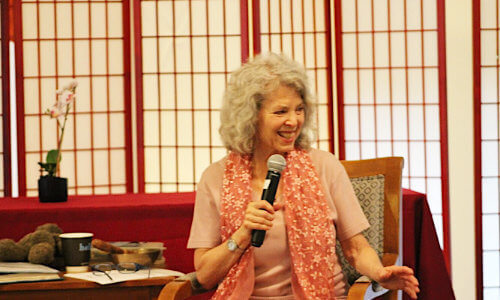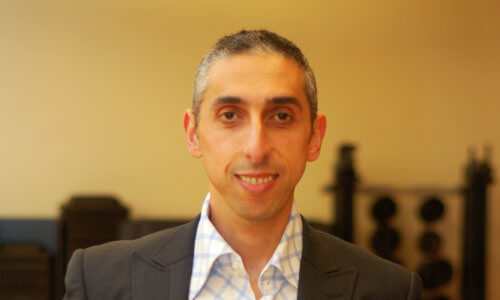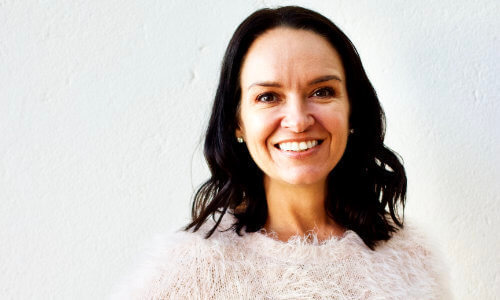Fifteen years ago in job interviews all over the world, people were asked: “Where do you see yourself in five years?” No one at the time could predict the challenges that the year 2020 would bring. From fire, political tensions, coronavirus, lockdown and a lack of toilet paper, this year has been one to test even the calmest of souls. However, there is still room in these times for joy, for love, for happiness. From the leading minds in wellbeing, we present to you twelve different authors and inspirational figures who answer the question: “How to find Joy in Difficult Times?”
Oprah Winfrey

Who? Oprah Winfrey, one of the most inspirational women in America, brought together some of the greatest minds and beautiful spirits in her award-winning show. Since then, she has been acting, writing, producing and still brings brilliant minds to the forefront.
Be thankful for what you have; you’ll end up having more. If you concentrate on what you don’t have, you will never, ever have enough.

Who? Ana Holub has a deep fascination with the roots of conflict in both personal and international levels. This fascination has helped her in developing her skills and techniques as a spiritual coach and forgiveness counsellor. Ana has received the Champion of Forgiveness Award from the Worldwide Forgiveness Alliance.
Even though times are tough, we can see each day as an excellent teachable moment. What can we learn? Well, the first thing is to stop looking outside ourselves for joy. Joy only occurs in this moment, inside us. Most of us have been taught to constantly look outside ourselves for the next shiny object to own, to covet, to grab. But this brings us nowhere. It brings only suffering.
Let’s turn our focus around.
Start by bringing gratitude into your heart each morning, and spend the rest of the day shining your light for everyone and for the Earth. Joy is meant to be shared!

Who? Bestselling author, relationship expert, and co-creator of Inner Bonding, Dr. Margaret Paul has shared her work on The Oprah Winfrey Show and to audiences all over the world. Through this, she helps others to let go of shame, guilt and the negative feelings that prevent them from truly loving themselves.
Joy is a gift of spirit that we experience when are open to learning about loving ourselves and sharing our love with others—which opens our heart to the love, peace, truth and joy that is spirit. While we can feel momentary joy from happy events and situations, deep and ongoing joy is an inside job resulting from our intent to love rather than to control, avoid and protect against pain. When we close our heart to pain, we also close it to joy. Finding joy in difficult times is about choosing love, gratitude, and compassion with ourselves and others moment-by-moment. Then, whatever you choose to do will be filled with joy.

Who? Tony Fahkry, a self-empowerment coach, speaker, and writer delights in helping others to discover their genius talents to awaken their highest potential. His books have been endorsed by the likes of Dr. Eldon Taylor, and Dr. Joe Vitale from The Secret.
Pain in life is inevitable, though we needn’t stay stuck in our difficulties for too long. We should allow it to do its work and push us to rise above it. There’s a well-known quote that reads: “Pain is inevitable, suffering is optional.” That is, look for joy in our everyday circumstances and cultivate it, so it burns out the pain. Life is precious and to live it joyfully is one of life’s great blessings. The path to joy comprises pain, though it comprises getting through it to experience abundant joy.

Who? Energising and equipping women with tools and strategies to take bolder stands for their quality of life is Maria Dowd’s most electrifying passion. Founder of My Amazing LYFE, My Money LYFE, empowerment programs and services designed to help clients holistically map and implement transformative financial and life plans. L.Y.F.E, Live Your Freedom Every Day!
2020 has been the year of immense clarity, layered with heightened levels of comfort in the thick of rebellion. The unsteady hand of our respective world views has been forced. Depending on race, age, and how we’ve been socialized, these times have compelled each of us to hold the mirror so close to our faces, we can see the nuance of every blemish. And, it’s forced us to look out of windows we’ve never been challenged to look out before. As uncomfortable as it’s been for all of us, there’s nowhere to go but UP. And, there’s peace in that knowing.

Who? With over twenty years’ experience in the field of psychology, and fifteen years in corporate training and professional development, Dr. Tracey Hunter is no stranger to the emotional strains that people face day to day. Working as a psychologist and relationship coach, Dr. Tracey Hunter works with individuals who are ready to make a deep transformational change in order to embrace self-empowerment, joy, love and freedom in their lives.
In difficult times, it is important to give ourselves permission to seek out pleasurable and enjoyable activities. When there are stressful events in our external world, our nervous system registers danger, and signals the brain to release stress hormones. It is an important emotional skill to be able to override the brain’s stress response with a conscious intention about the inner state that we want to cultivate. We can choose activities that will relax our nervous system and give ourselves a sense of pleasure or contentment, such as being in nature, laughing, dancing, socialising or any activity that feels nourishing.

Who? Psychologist, coach, therapist and writer Barry Winbolt is a provider of personal and professional training, giving others a better handle of themselves, their relationships and life in general.
Like all emotions, joy is fleeting and insubstantial. We experience it in a moment, and it is often unexpected. You can’t schedule joy, so I wouldn’t advise anyone to make joy their goal. I get the idea; the aspirational title is meant to inspire, to shine like a beacon of hope. But instead, it acts more act like a flame to the moth. Simplify your life and work to be content. That will create the space for you to notice the joy. It’s always there if you look.

Who? A highly regarded Master Coach and Founder of 2Mpower.co, Anne McKeown is on a mission to empower others to find their inner strength and authentic self. After her own battle in finding happiness in work and home, Anne strives for all women to find their path just like she has found hers.
The mind is powerful, but not so clever that it can be happy and sad at the same time! So, the first step is to choose joy. Everything starts with a decision. Then answer this question: “What does joy look like, sound like and feel like for me?”
My answer is dancing. When dancing, the body releases positive hormones making me feel more joyful. I hear uplifting music, turning up the volume on my joy. If I invite a partner to join me and we hold hands this simple touch creates a sense of connection intensifying the joy. And when others join in we all benefit from belonging and community fun. It is not difficult to find joy in difficult times, just choose to dance!

Who? Award-winning writer, storyteller, mentor and Heart Writing™ Coach, Lissa M.Cowan helps writers and creators to find the spark within and start, or finish that story that’s been burning in their hearts. Discovering that inner joy that we once found in crayons, paints and cushion fortresses, Lissa doesn’t just want you to finish your story but enjoy the journey.
These days, finding balance is critical to our survival. To cultivate more balance in your life, I suggest writing down five things that bring you joy and give you energy. Try to do at least one of these per day. After a week, see if you can do two or three a day, and so on. It won’t be easy at the start, but gradually you’ll find more ways to adjust other things in your life to make room for joy—even if only a little bit at the start!

Who? The spiritual leader of Tibet is regarded as one of the most influential and happy figures of our time. In his book “The Art of Happiness”, he explains where joy and happiness come from, mentioning his experience speaking to an audience in Raipur:
I mentioned that the purpose of life was happiness, so one member of the audience said that Rajneesh teaches that our happiest moment comes during sexual activity, so through sex one can become the happiest. He wanted to know what I thought of that idea. I answered that from my point of view, the highest happiness is when one reaches the stage of liberation, at which there is no more suffering. That’s genuine, lasting happiness. True happiness relates more to the mind and heart. Happiness that depends mainly on physical pleasure is unstable; one days it’s there, the next day it may not be.

Who? Sandy Hounsell Transformational relationship healer and mentor has spent 20+ years developing her ability to connect with people on a very deep and personal level, helping women to access the love they seek. In addition to being a certified clinical hypnotherapist, Sandy is an advanced Theta and Crystal Healer, Reiki Master, Time Line Therapist and Spiritual Healer.
There is a way…
Go into the silence to connect with your most powerful self.
Focus: on your heart chakra, see a purple rose there.
Float: down into the centre.
Open: the door, step into your soul’s brilliant white light.
Ask: your soul to fill every cell in your body with its light.
Breathe the light in and out every pore of your body. Feel yourself dissolving into your light.
Ask: your soul to show you how to: change the situation, what actions to take for a joy filled solution and receive the wisdom from the situation for your growth.

Who? Vance Larson has spent over 20 years as a crisis counsellor, and the last decade working as a life coach and consultant. His goal is to reconnect the client with their own power to create the life they want, using a holistic approach.
A difficult time, doesn’t necessarily mean a difficult mind. There are many things we can do to stay balanced during such times. I find the single most important thing we can do is control our environment. In a COVID world, one way to bring peace is to limit the amount of news we are taking in. COVID aside, your environment should lend itself to relaxation and feelings of safety. This includes the people you surround yourself with, and the thoughts you keep. Difficult times are inevitable. Don’t let them rent space in your head.
So, there you have twelve amazing, inspirational souls with their advice on how to find joy in difficult times. From happiness to within, to dancing, taking the time for yourself or filtering the news, we hope that you found something to help aid you in these trying times. For all the latest in wellbeing, become a free member at Blisspot today here.







